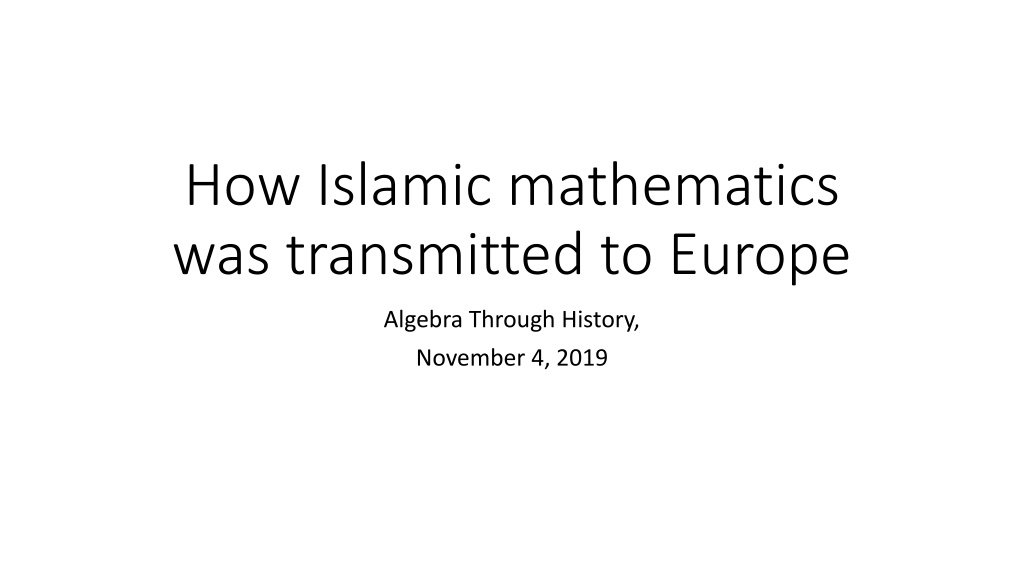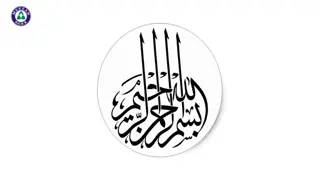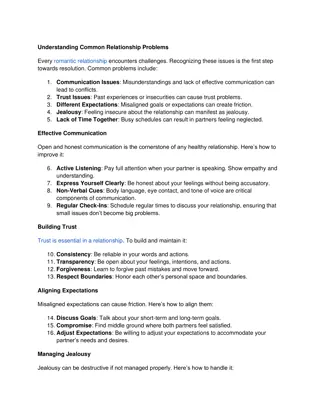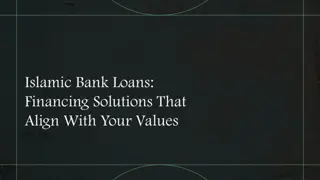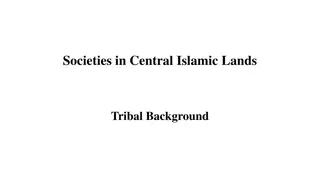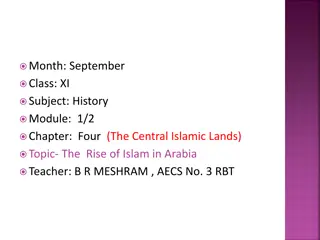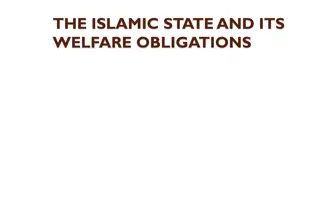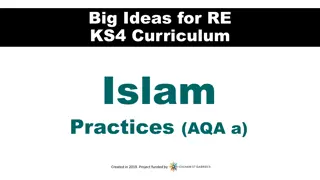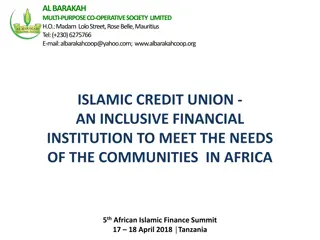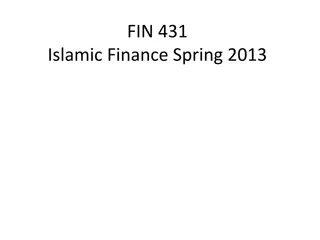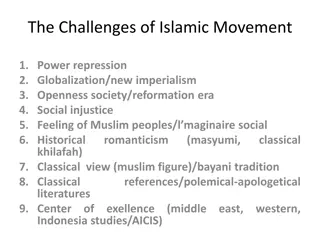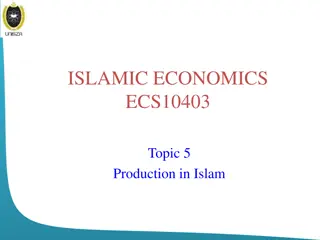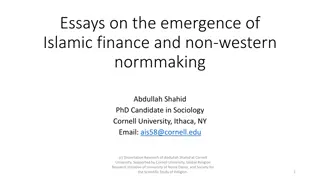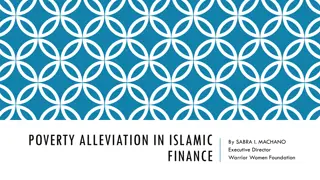Transmission of Islamic Mathematics to Europe: A Historical Journey
Islamic mathematics made its way to Europe during the time period of the decline of the Western Roman Empire and the rise of the Abbasid Caliphate. The transmission of knowledge was facilitated through translations of works from Arabic to Latin, sparking a new wave of interest in European circles. Notable figures like Gerbert of Aurillac played a key role in reintroducing mathematical concepts like algebra and Hindu-Arabic numerals to Western Europe.
Download Presentation

Please find below an Image/Link to download the presentation.
The content on the website is provided AS IS for your information and personal use only. It may not be sold, licensed, or shared on other websites without obtaining consent from the author. Download presentation by click this link. If you encounter any issues during the download, it is possible that the publisher has removed the file from their server.
E N D
Presentation Transcript
How Islamic mathematics was transmitted to Europe Algebra Through History, November 4, 2019
Recall the time frame End of Western Roman Empire 476 CE Alexandrian tradition of Greek mathematics had ended even before this (death of Hypatia in about 415 CE) Eastern Roman ( Byzantine ) Empire much stronger and more stable for several centuries, but slowly declining after about 800 CE. Many Greek mathematical and scientific texts are preserved there; some continuing scholarship, but intermittent and not much mathematics Height of Abbasid Caliphate (capital in Baghdad), translation movement for Greek, Indian, and other texts, roughly 800 1200 CE
Old and new developments The previous Umayyad Caliphate was deposed by the Abbasids The Umayyads relocated to Spain, rule there and in North Africa (756 1031 CE); smaller and smaller Islamic states persist in the southern section of Spain until 1492 CE when King Ferdinand and Queen Isabella reconquer the last of them Charlemagne (742 814 CE) tries to reunify western Europe, begins cultural revitalization there; but also engages in conflict with the Muslim states in Spain
Information transfers Islam -> Europe Starting around 1000 CE a new wave of interest in the advances of Islamic science and mathematics started in Europe Classical learning was largely lost in Europe before this but recovery from the Dark Ages was clearly under way by this time Many mathematical and scientific works began to be translated from Arabic to Latin at about this time, esp. in Spain This included both works that had first been translated from Greek to Arabic in Baghdad (e.g. Euclid, Archimedes, Apollonius, Diophantos, ) And works that originated in the Islamic world (Al-Khwarizmi s books on algebra and the Hindu-Arabic numerals, works of Thabit ibn-Qura, etc.)
Gerbert of Aurillac, (ca. 945 1003 CE) Gerbert grew up in southern France Also studied in Spain, where the influence of Islamic traditions continued, even in the areas that had been won back from the Umayyads in the first stages of the reconquista He returned to France, taught in the cathedral school at Rheims Taught Hindu-Arabic numerals, use of the abacus (this tool for calculation had fallen out of use in Western Europe), astronomy, etc. He authored textbooks on elementary arithmetic, algebra, geometry, etc.
A page from Gerberts geometry textbook (copy from 12thcentury CE)
Gerberts later career He also designed one of the first armillary spheres to be constructed in post-classical Europe (a kind of representation or model of the solar system to help visualize motions of the sun and planets) He served as abbot of a monastery in Bobbio, in Italy Became an archbishop Eventually elected Pope, took the name Sylvester II, and His reign extended from 999 to 1003 CE He was certainly instrumental in raising the general level of knowledge of, and interest in mathematics and science in Western Europe, building on Islamic innovations and knowledge transmitted from the classical world.
Gerard of Cremona (1114 1187 CE) Cremona is a city in northern Italy (later, and still, famed for its violin- makers, including Andrea Amati, Antonio Stradivari, Giuseppe Guarneri, and others but that s 450 to 550 years in the future!) Gerard settled in the Spanish city of Toledo, where he was a part of a group of scholars translating Arabic mathematical and scientific texts into Latin. Some works he is known to have translated: Al-Kharizmi s Hisab al- jabr w al muqabala, an Arabic version of Euclid, Ptolemy s Almagest, philosophical works of Aristotle, medical texts, etc.
An illuminated capital from a medical text translated by Gerard
Robert of Chester, fl. ca. 1141 1150 CE By his name, he would have been born in England But at some point he relocated to Spain, also settled in Toledo, where he almost certainly was in contact with Gerard of Cremona His translation of Al-Khwarizmi s Hisab al-jabr w al muqabala (later translated again from Latin into English) was the source we used(!) We know this was completed in 1145 CE Toledo was a perfect place for cultural interchange between the Islamic and Judeo-Christian worlds at this time because the Muslim rulers were patrons of learning and religiously relatively tolerant.
Other contacts with the Islamic world No consideration of this general period would be complete without at least a mention of the Crusades: First Crusade (1095 - 1099CE): Initial success in reconquering parts of the Holy Land; four Crusader states Kingdom of Jerusalem, Principality of Antioch, the County of Edessa in present-day Syria, and County of Tripoli in present-day Lebanon Second Crusade (1147 1149CE): Prompted by fall of the County of Edessa 1187 CE: Jerusalem reconquered by Saladin Third Crusade (1189 1192CE): Attempts but fails to retake Jerusalem Fourth Crusade (1202 1204CE): Again plans to retake Jerusalem, but the army ends up sacking Constantinople instead. The Byzantine Empire starts into its final decline at this point, though it lasts until 1453 CE.
Leonardo of Pisa (ca. 1170 c. 1240 CE) At about this point, the main action in the story of algebra switches to Italy and stays there for several hundred years One of the first important and versatile figures is Leonardo of Pisa, also known as Fibonacci (a made-up nickname for son of Bonaccio in Italian) His father was a merchant and customs official who directed a trading post in modern-day Algeria (strong Islamic influence) He traveled with his father around the Western Mediterranean on business trips So it is thought that Leonardo almost certainly learned at least some Arabic in addition to Italian and Latin
Hes probably best known today for the Fibonacci sequence The sequence of numbers: 1,1,2,3,5,8,13,21,34,55,89,144,233,377,610, Question: What s the pattern here?? People are still fascinated by the properties of this sequence of numbers and are proving new results about it all the time(!) There is even a journal called the Fibonacci Quarterly that prints results of new research about Fibonacci numbers and their generalizations.
Leonardo of Pisas principal works Liber Abaci (1202) a book on arithmetic and computation; this did more than almost any other work to popularize the use of Hindu- Arabic numerals in Europe (even though Gerbert of Aurillac had taught about them about 200 years earlier, they had never really caught on generally) A possible explanation Fibonacci emphasized their use for practical business computations and argued their superiority over Roman numerals (or even an abacus) for this purpose He includes a discussion of quadratic equations at the end drawing heavily from Al-Khwarizmi s treatment.
What Fibonacci says I received an excellent education in the methods of the nine Indian numbers; the knowledge of these methods pleased me more than anything else Therefore strictly embracing the Indian method, and adding some of my own ideas, and more still from Euclid s geometry, I assembled them in this book as understandably as I could (from the Liber Abaci) Presumably this excellent education came by way of Al-Khwarizmi s book on the Hindu-Arabic numerals or people who had studied it
De Practica Geometriae De Practica Geometriae (1220) this is a very interesting collection of geometrical techniques for land surveying, area and volume formulas, and other geometrical problems (included ideas from Archimedes, Heron, other Greek mathematicians he would have learned by way of Arabic works) Unlike Euclid, this practical geometry does use numbers for lengths of lines, areas of plane figures, volumes of solids, and other geometric magnitudes. Not very algebraic per se, but it has some of the same practical orientation we noted in Al-Khwarizmi and some of Fibonacci s other work At the same time, Fibonacci does give full proofs of many results along Euclidean lines(!)
Fibonaccis Liber Quadratorum Latin the Book of Squares Subject is techniques for solving equations and problems in number theory not specifically practical, so somewhat atypical for him Seems to draw from Diophantus, but Fibonacci doesn t use his symbolic representation of expressions. One of his results: (?2+ ?2)(?2+ ?2) = (?? + ??)2+ (?? ??)2 Modern mathematicians say this by stating that the set of sums of two squares of integers is closed under products. This was proved first by Diophantus, taken up by Legendre, Gauss, etc. in 18th -19th centuries.
